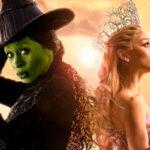

Released in 1995, “Jumanji” quickly became a classic that blends adventure and fantasy, captivating audiences of all ages with its engaging plot and innovative visual effects. Based on the book of the same name by Chris Van Allsburg, the film features a magical board game that turns the players’ lives into an exciting journey filled with dangers and challenges.
The plot follows the story of Alan Parrish, played by Robin Williams, who gets trapped inside the game for decades and, upon being released, must face the consequences of his actions. In addition to Williams’ charisma, the film is notable for its special effects scenes, which were considered cutting-edge at the time of its release.
In this text, we will explore some fascinating curiosities about “Jumanji”, from little-known details about the production to the critical reception and the lasting impact it had on popular culture.
1 – “MANY EFFECTS”
“Jumanji” is adapted from the book by Chris Van Allsburg, who also authored “Zathura”.
According to Allsburg, the name Jumanji comes from the Zulu language in South Africa and means “many effects”, reflecting the “surprising consequences of the game” explored in the film.
2 – HEAVY MAKEUP
Bradley Pierce, who played young Peter Shepherd in the film, spent about three hours in prosthetic applications for his monkey scenes, a process that lasted for 15 to 20 days. He loved these moments of facial transformation and the use of makeup.
3 – ROBIN WILLIAMS WAS MUCH LOVED
Robin Williams was deeply loved by the residents of Keene, New Hampshire, where the filming of “Jumanji” took place.
In 1994, he received the key to the city from the local mayor. After his passing in 2014, the people of Keene paid tribute to the actor with a memorial of flowers and candles under the Parrish Shoes sign and organized a public screening of the film in his memory.
4 – WHAT “JUMANJI” MEANS
The film’s protagonist, always with his irreverent spirit, admitted that he used to give “false answers” to curious fans about the meaning of the title”.
I used to say it was an island in the Caribbean,”Williams joked in an interview”. I’m sure many people went looking for that information at travel agencies afterward”.
5 – ONE ACTOR, TWO CHARACTERS
For those who didn’t notice, Jonathan Hyde played two different roles in the film: first as Samuel, Alan Parrish’s father, and second as the antagonist Van Pelt, the hunter.
This choice was a nod to the classic casting in “Peter Pan”, where the same actor would play both George Darling and Captain Hook.
6 – THE RHINOCEROS SCENE
To capture the scene of the rhinos’ stampede, the production team used a hydraulic ram to launch a metal rhinoceros against the library wall. In post-production, the metal rhino was replaced by a herd of CGI rhinos.
7 – COULD ALAN PARRISH HAVE BEEN SOMEONE ELSE?
Williams was not the first actor considered for the lead role of Alan Parrish. In fact, many big names in the industry were on TriStar Pictures’ list, including Tom Hanks, Kevin Costner, Sean Connery, Harrison Ford, Mel Gibson, Michael Keaton, and Arnold Schwarzenegger.
8 – “ALMOST” A SHARED UNIVERSE
Although the film’s plot differs greatly from the original book, the ending is quite similar, with the board game being discovered by two other children.
In the book, these characters are Walter and Danny, the protagonists of “Zathura”. However, the 2005 film is a standalone production and is not part of the “Jumanji” cinematic universe.
9 – ALAN AND SARAH DON’T EXIST IN THE ORIGINAL BOOK
Speaking of the original book, the “Jumanji” depicted in the movie is quite different from what many American children knew from their copies.
For example, the main characters, Alan and Sarah, are not part of the book—in it, we only follow the children playing with the Jumanji board game.
10 – WOULD SARAH WHITTLE BE PLAYED BY ANOTHER ACTRESS?
Bonnie Hunt ended up playing the co-protagonist Sarah, but several renowned actresses were considered for the role, including Jodie Foster, Jamie Lee Curtis, Madonna, Demi Moore, Michelle Pfeiffer, Meg Ryan, Sharon Stone, Daryl Hannah, Julia Roberts, and Julianne Moore.
Interestingly, during filming, Robin Williams often made jokes about one of the actresses who was in the running for the role of Sarah, Jodie Foster, who had released the film “Nell” just a year before. Williams would imitate her character from the movie to the young Kirsten Dunst, who found her co-star’s antics amusing.
11 – MEXICO’S NATIONAL ANTHEM
In the scene where Van Pelt enters the gun shop, the original version shown in the U.S. features the Mexican national anthem playing in the background. However, for the release in Mexico, the music had to be changed, as it is illegal to use the anthem in commercial contexts.
12 – NOT FOR CHILDREN?
Critic Roger Ebert gave a harsh review of the film, arguing that it “was not suitable for children”, despite being marketed as such in theaters.
Even star Robin Williams acknowledged during the controversy that he wouldn’t take his own children to see the film, considering the action “excessively violent” and the content somewhat frightening.
13 – REAL GAMEBOARDS WERE SOLD
Over time, real Jumanji gameboards (without the magical powers, as far as we know) have occasionally been sold in stores, gradually becoming collector’s items. In 2014, one of these gameboards was auctioned for nearly $60,800.
14 – THE PARRISH MANSION
The house used as the Parrish Mansion was built for the movie and is not a real property.
15 – BUDGET AND BOX OFFICE
The film was expensive for the 90s due to the numerous special effects: US$ 65 million, and it was well worth it as it became a huge box office success, grossing US$ 262 million worldwide!
The 1995 version of “Jumanji” is a landmark in adventure and fantasy cinema, combining suspense, comedy, and innovative visual effects for its time. The film not only captured the audience’s imagination with its unique premise of a board game coming to life, but it also highlighted themes such as courage, friendship, and the importance of facing one’s fears.
With Robin Williams’ unforgettable performance and a blend of emotions and dangers, “Jumanji” became a classic that has spanned generations.
The curiosity around the use of practical effects and pioneering CGI, along with the creation of an engaging narrative, makes “Jumanji” a fascinating study on how cinema can transport audiences to extraordinary worlds.
Even decades after its release, the film continues to inspire new stories and adaptations, solidifying its place as a pop culture icon of the 90s.








